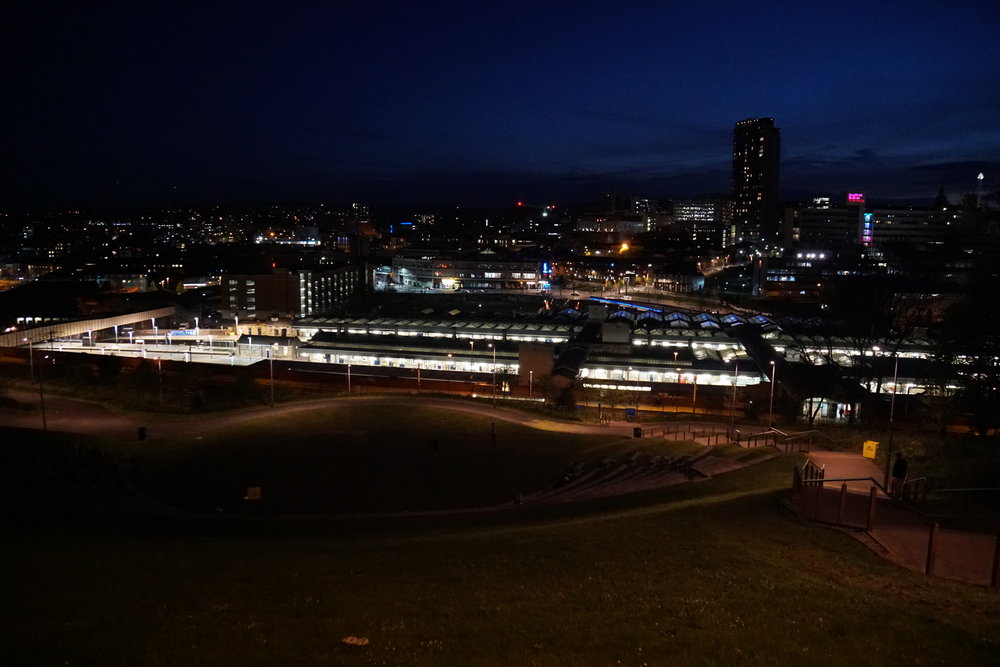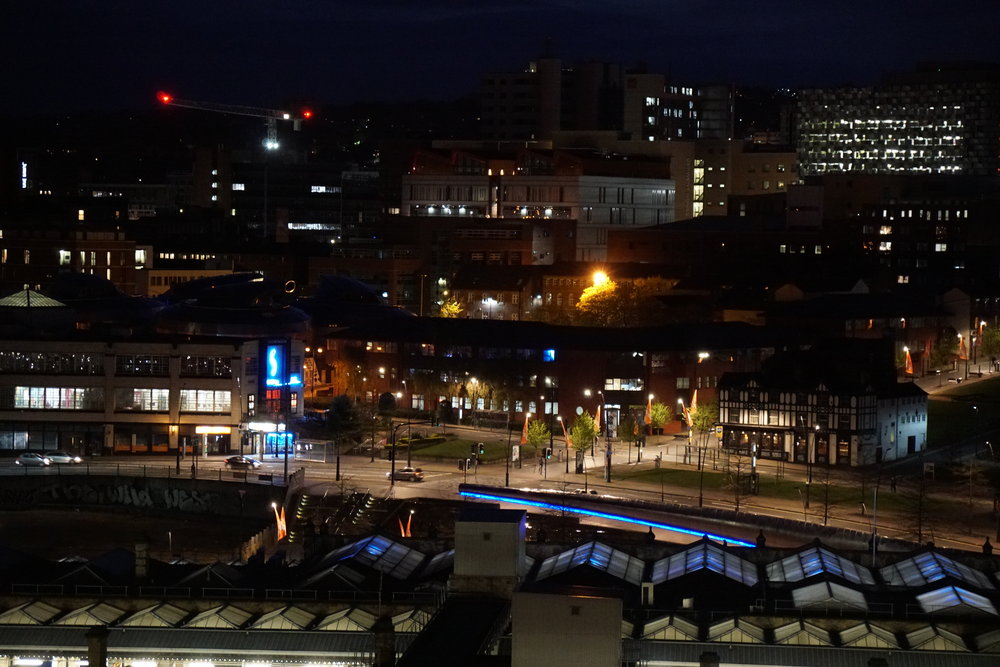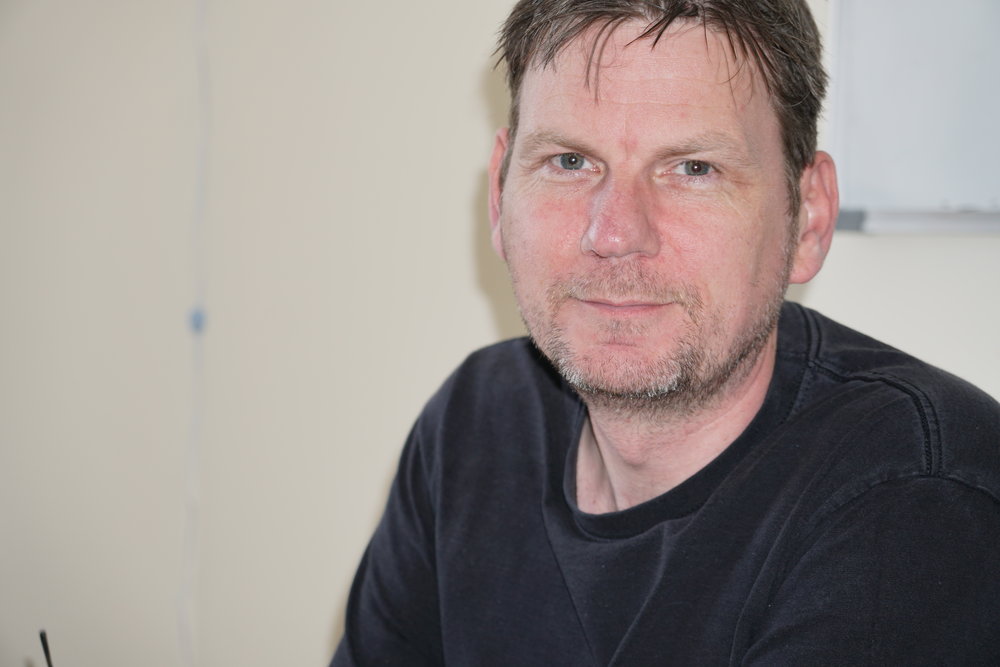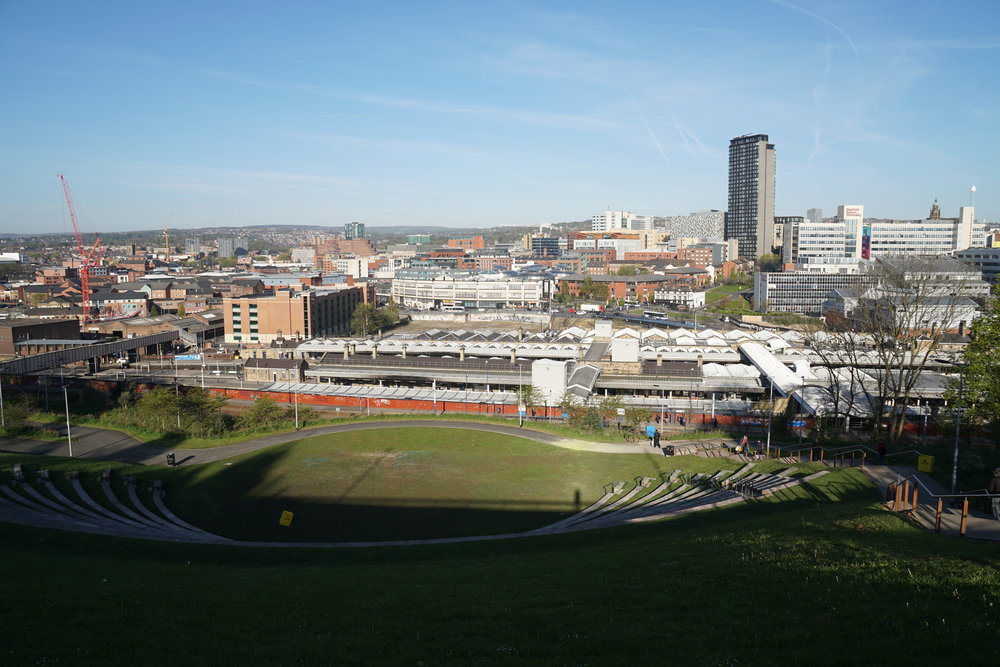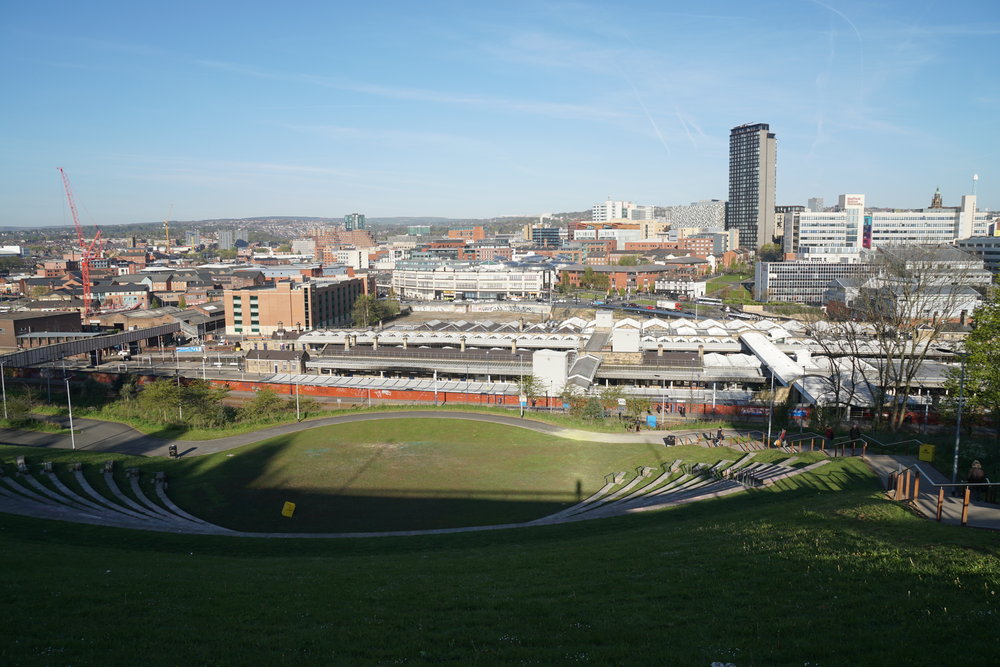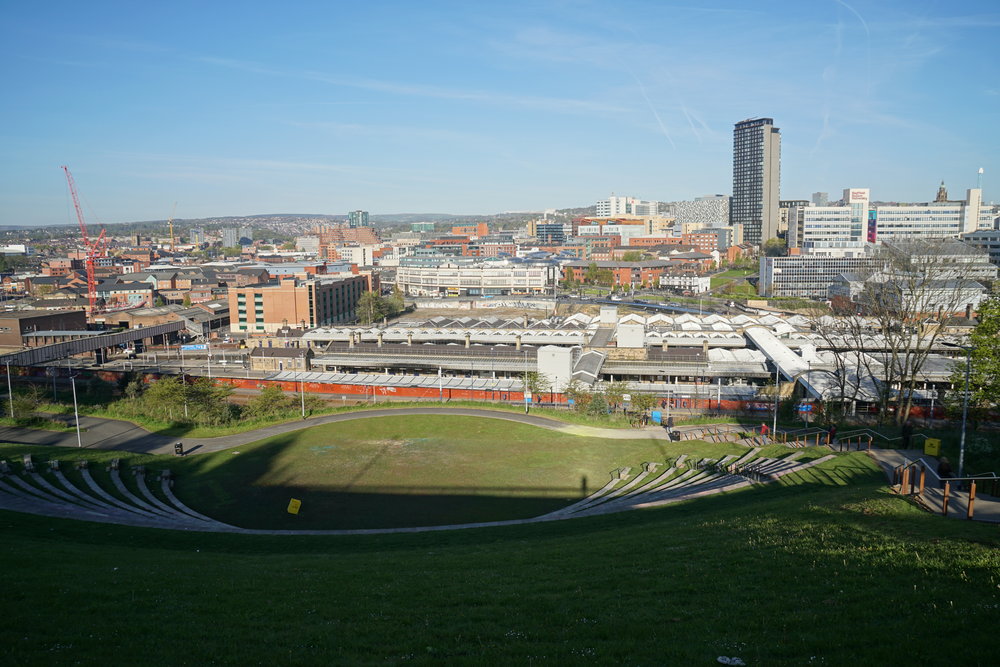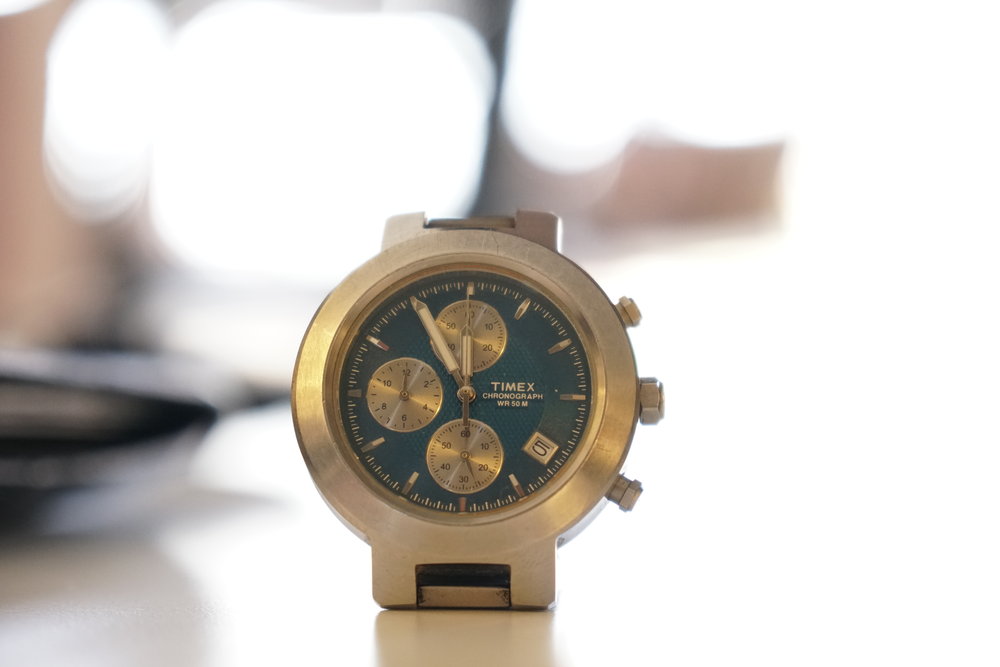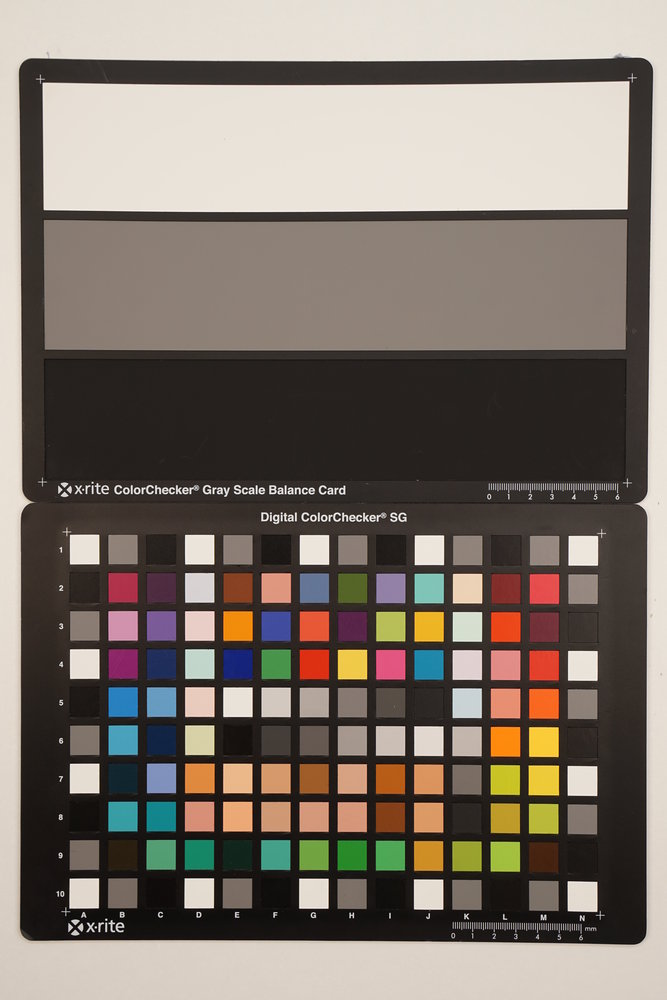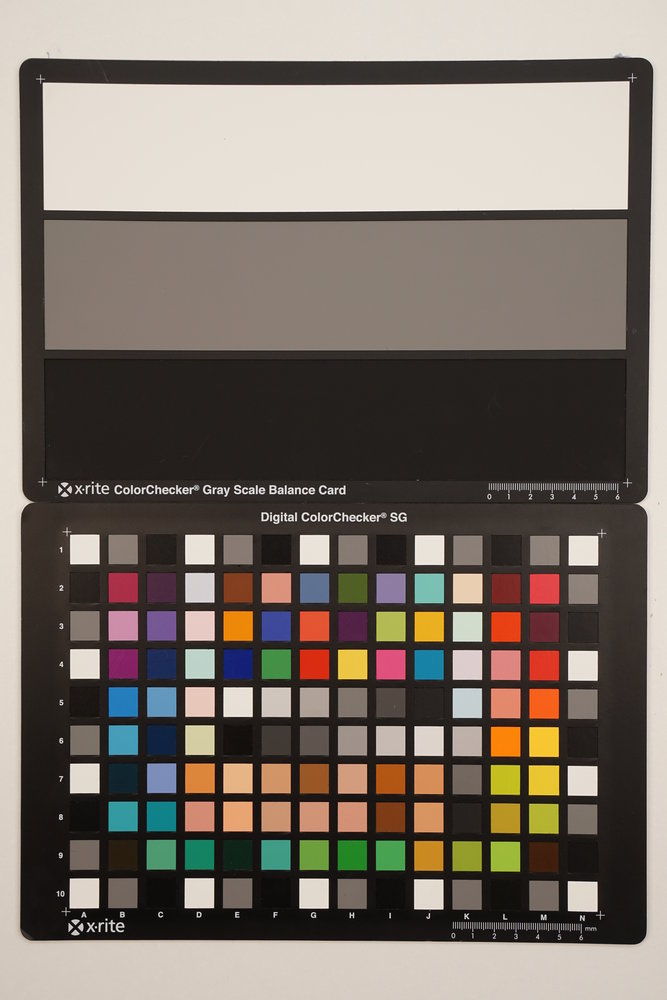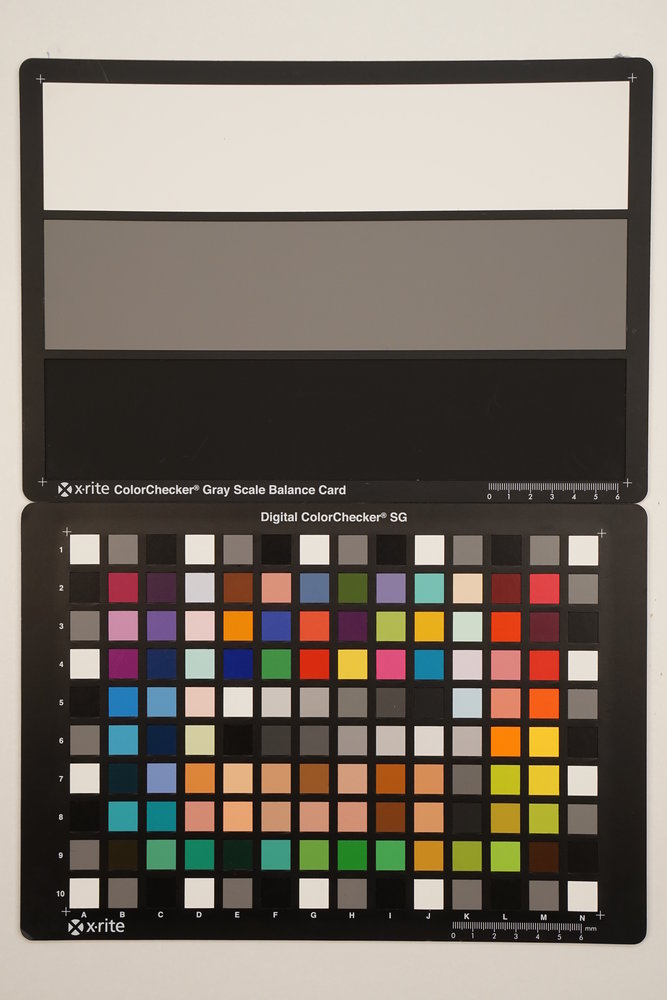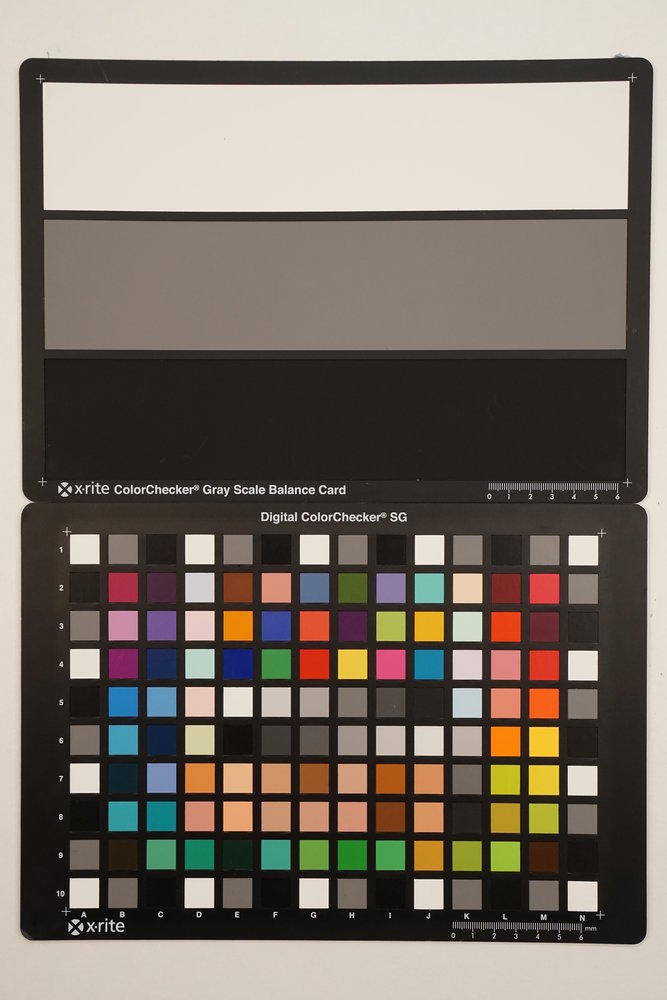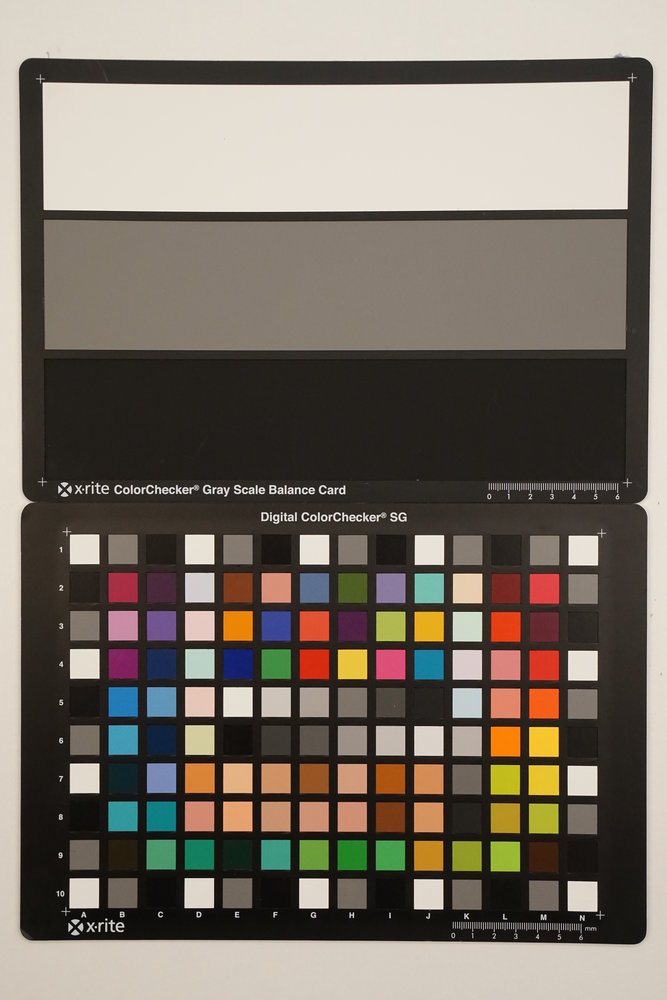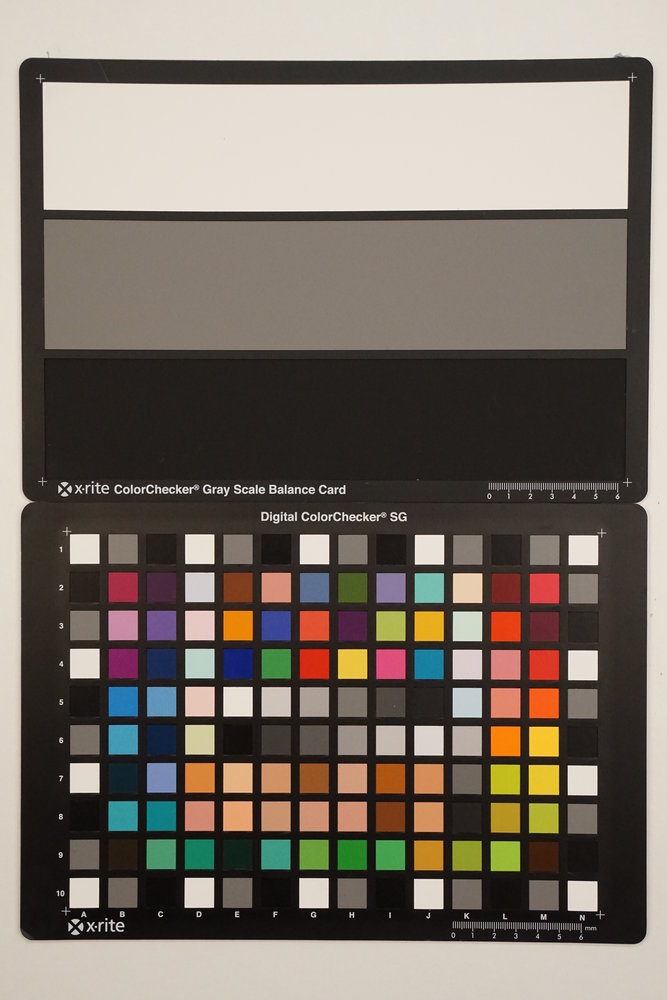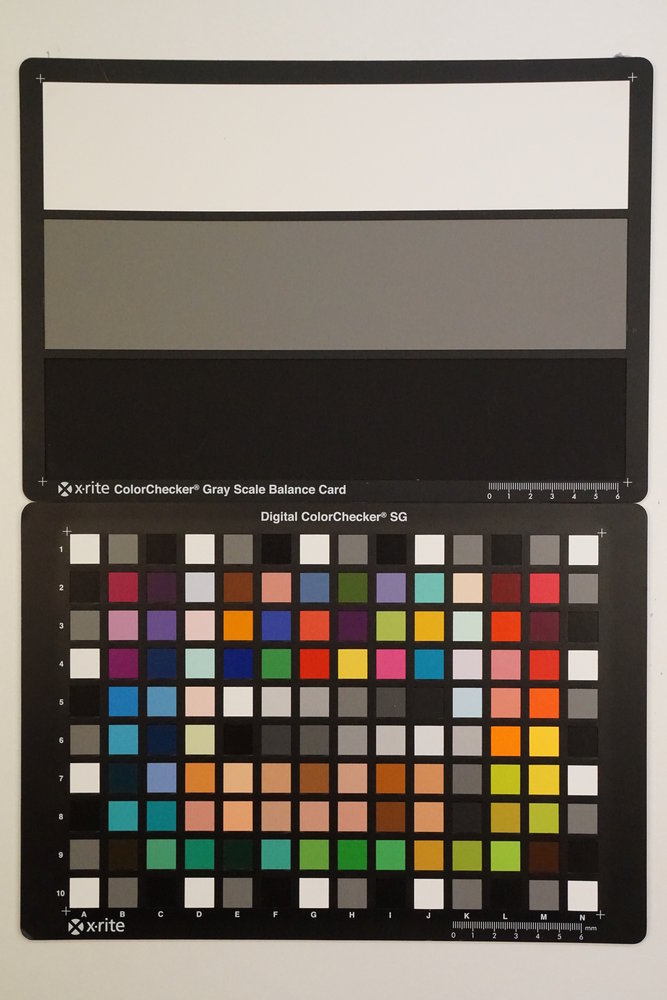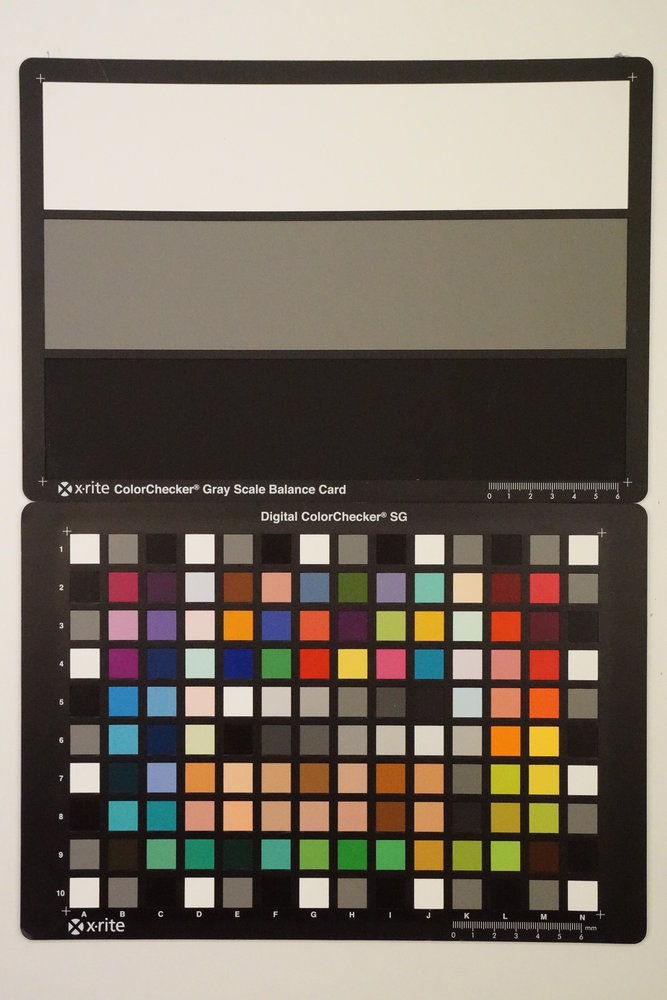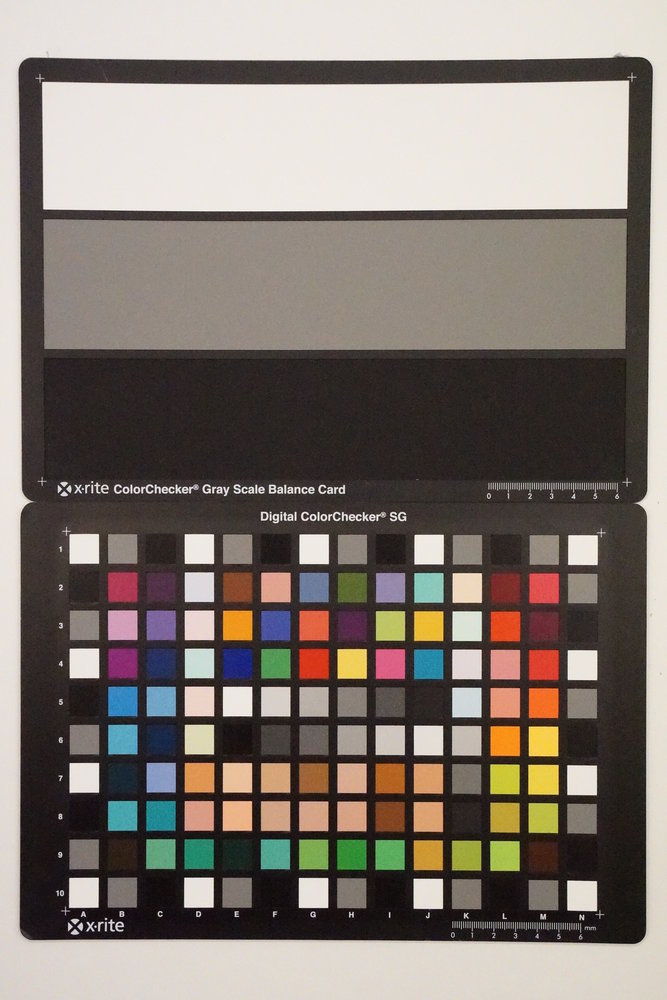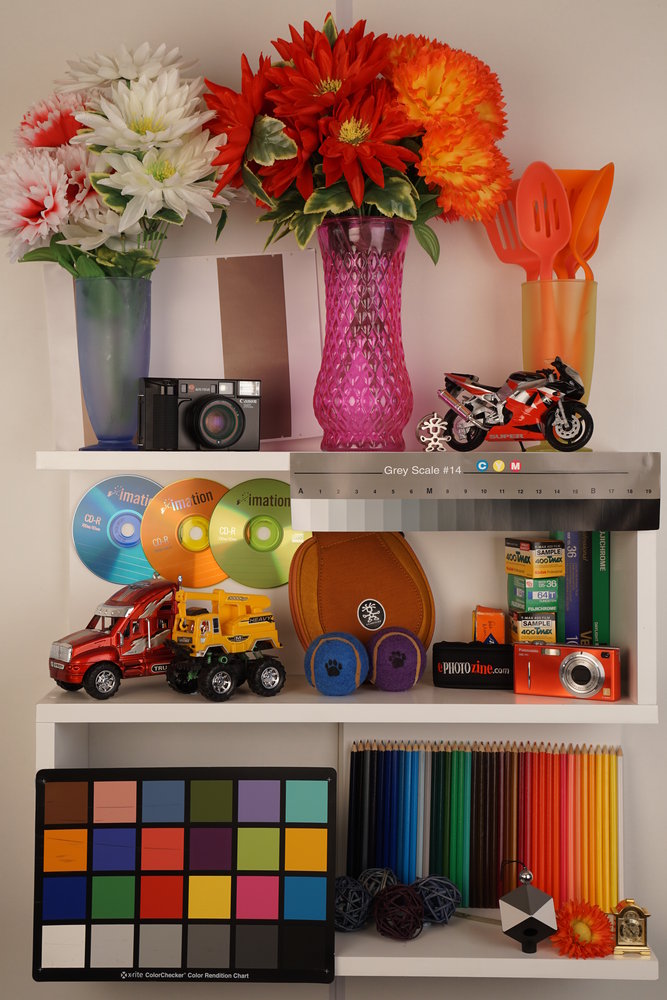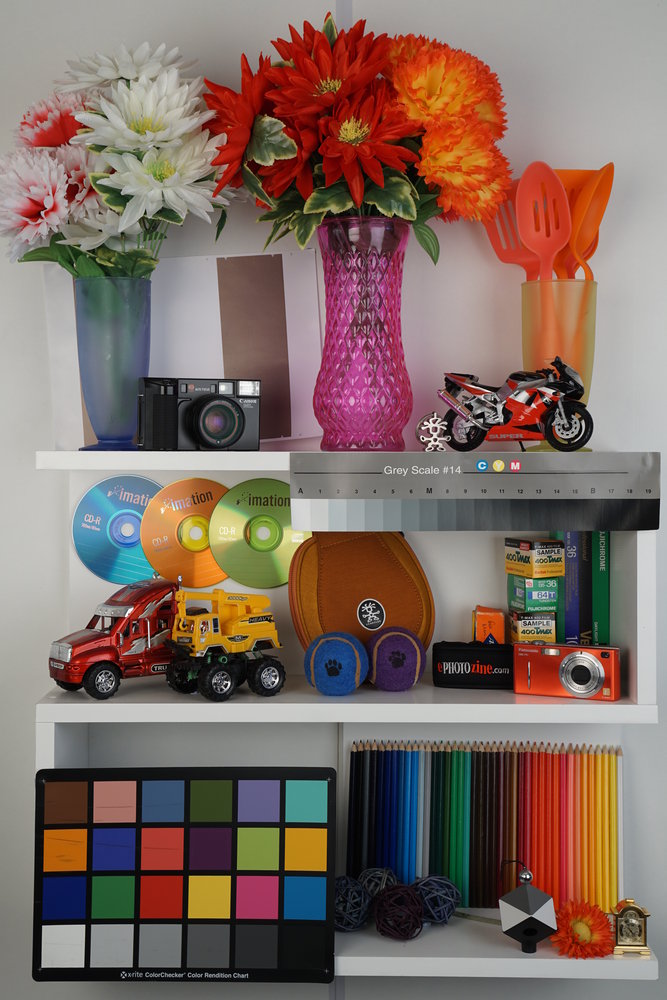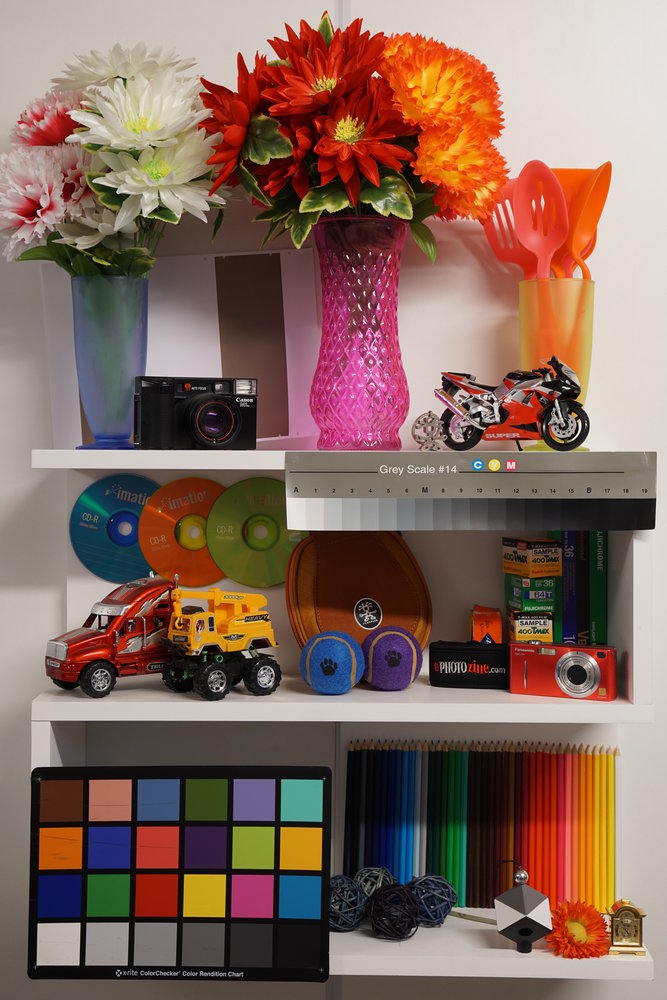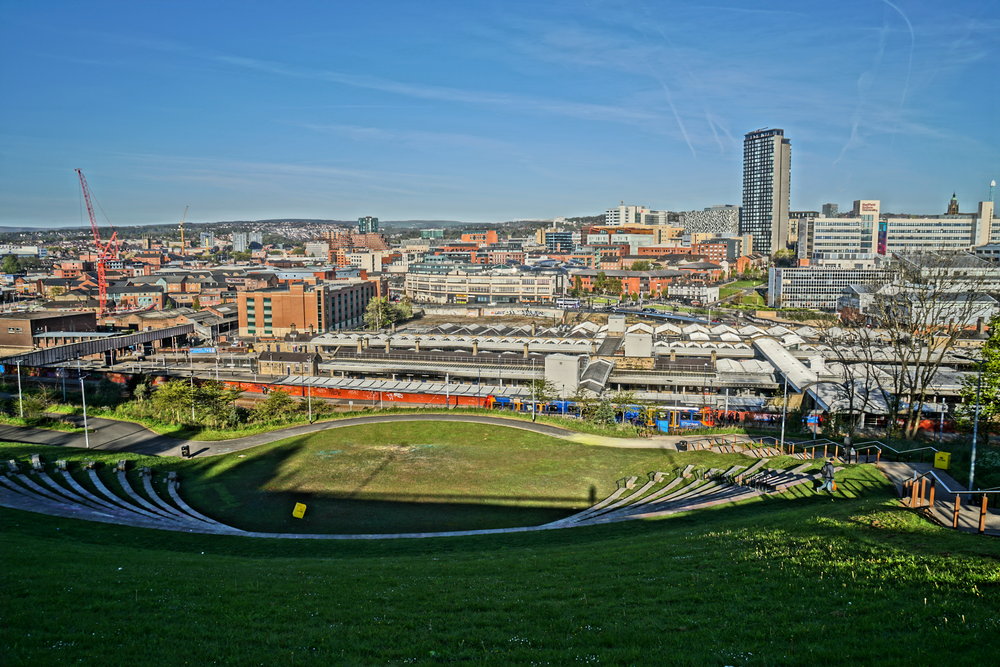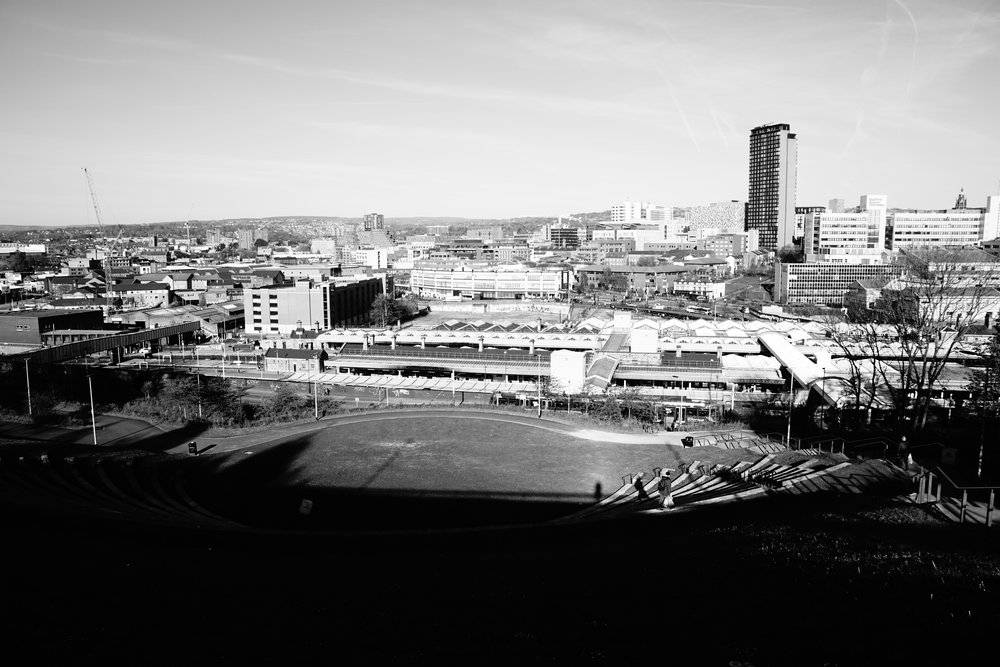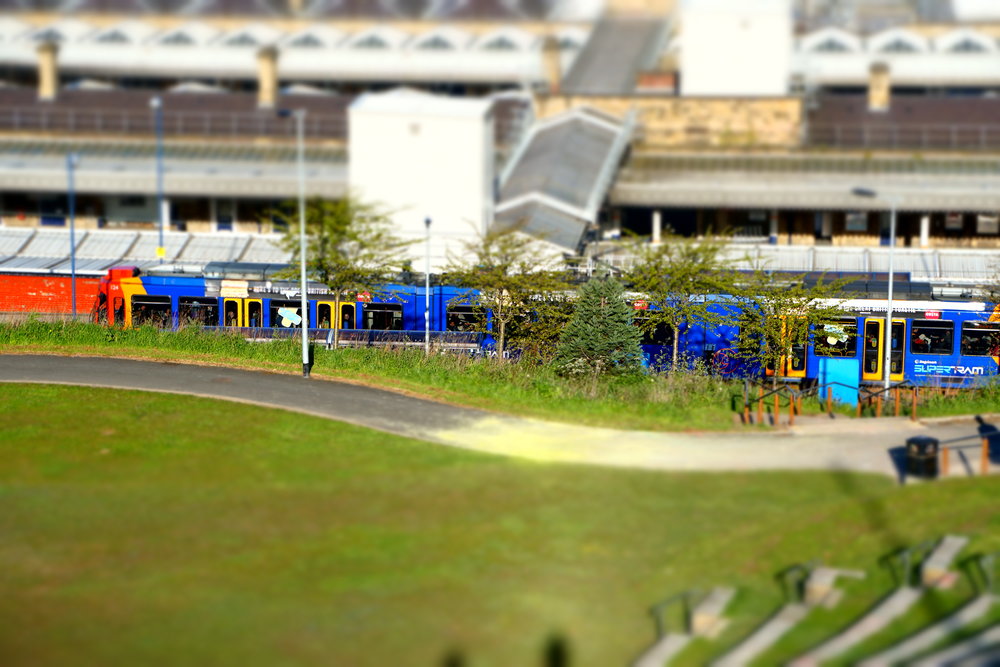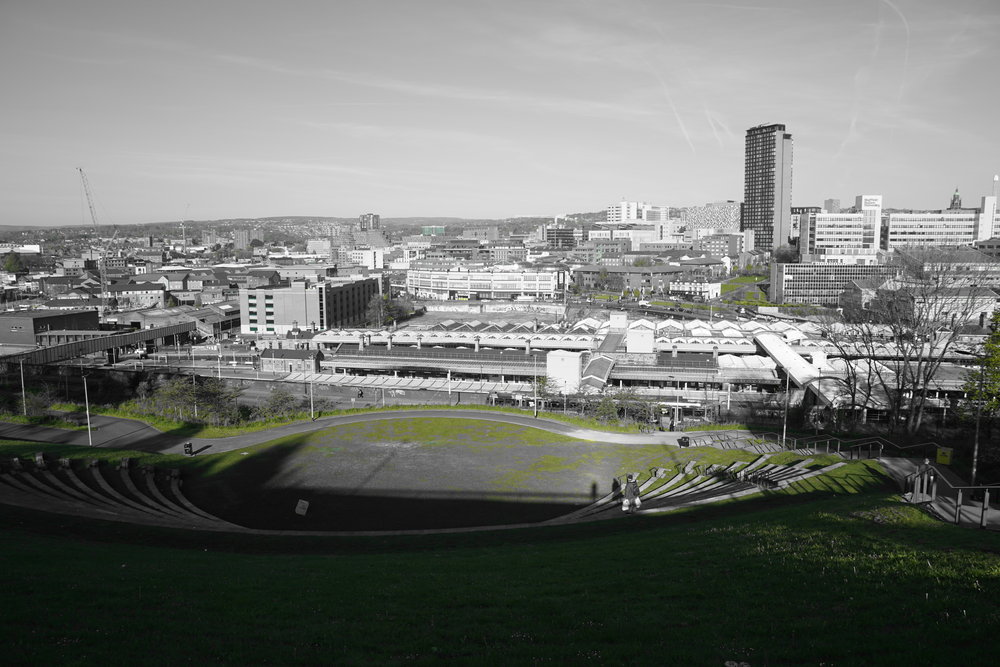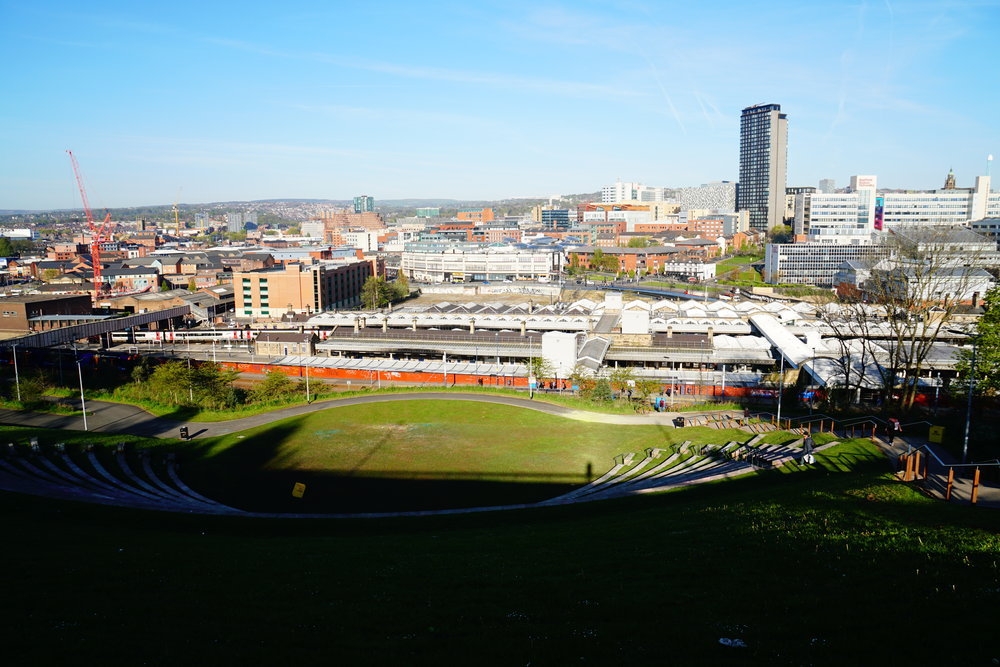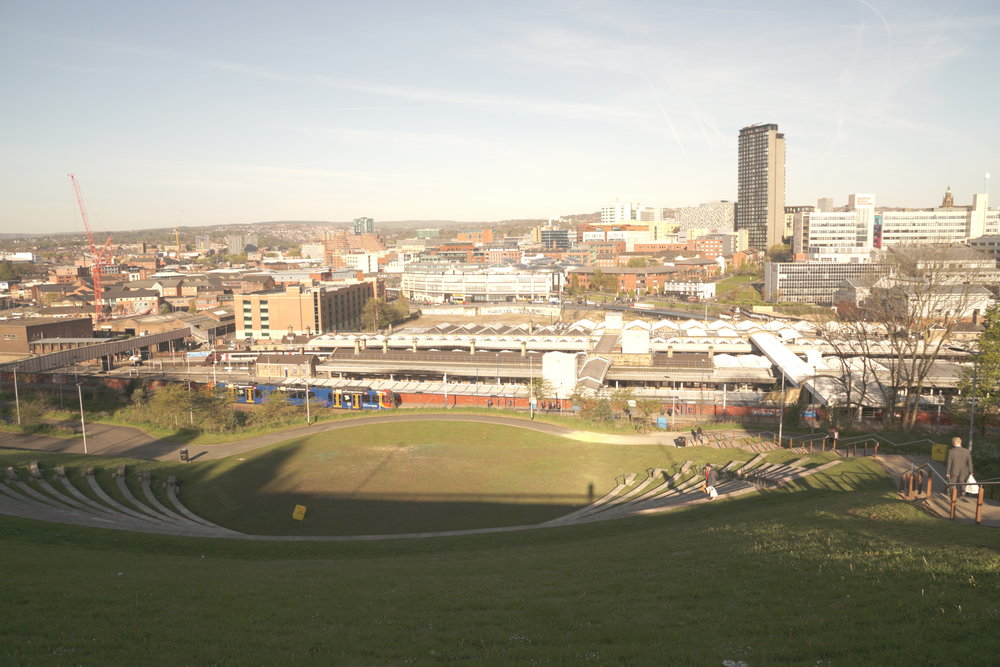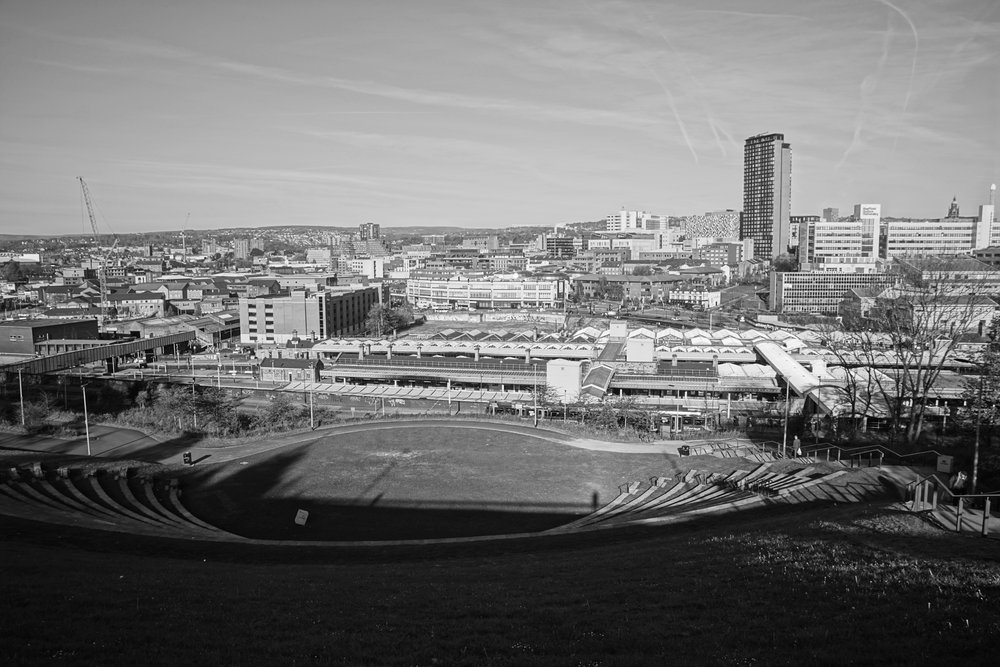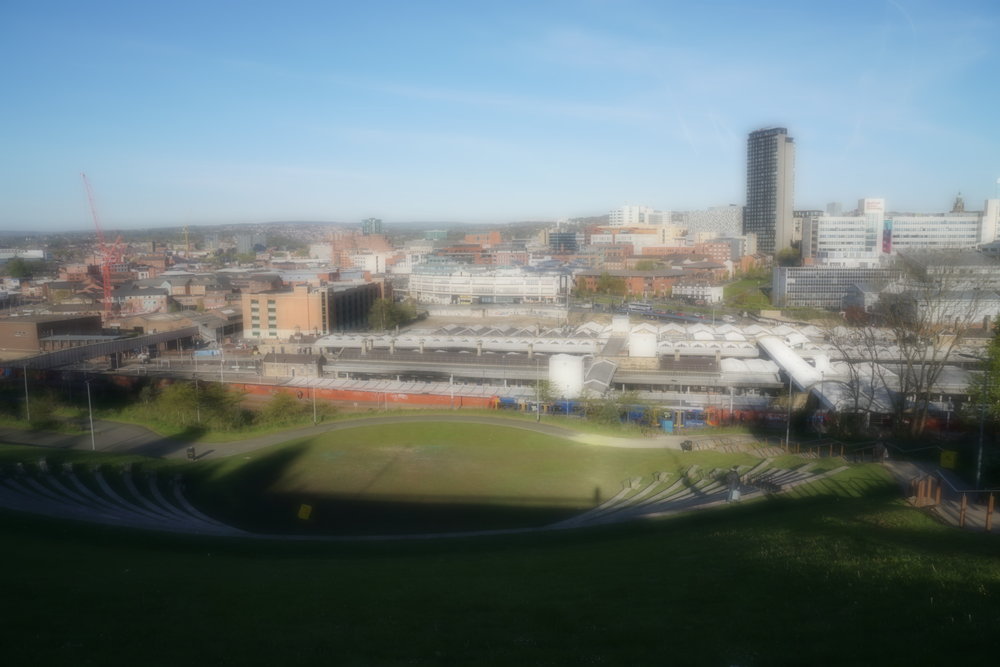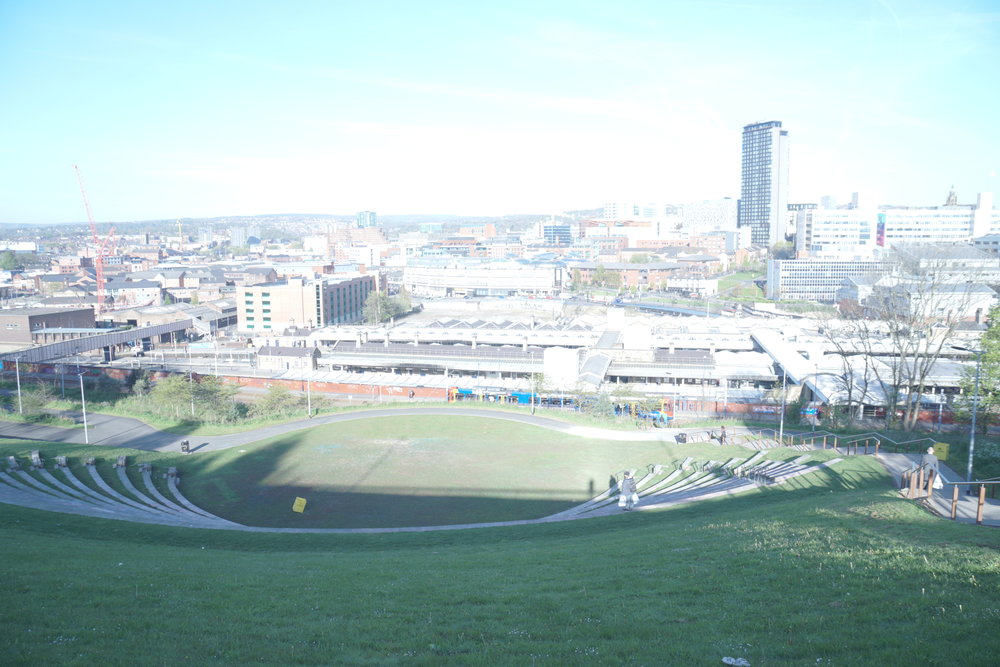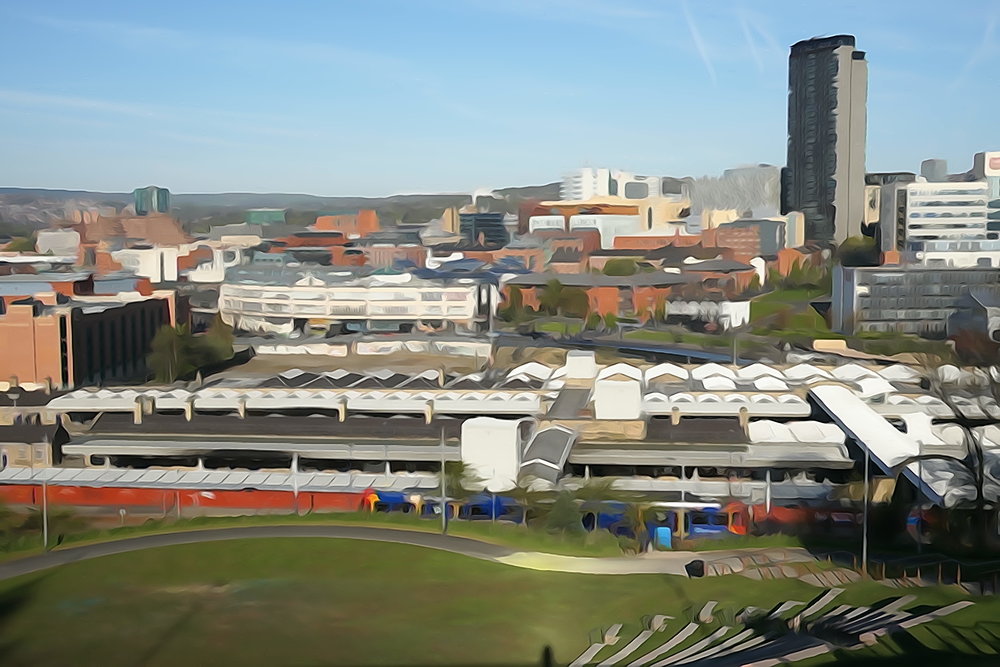Features
Handling
Performance
Verdict
Specification
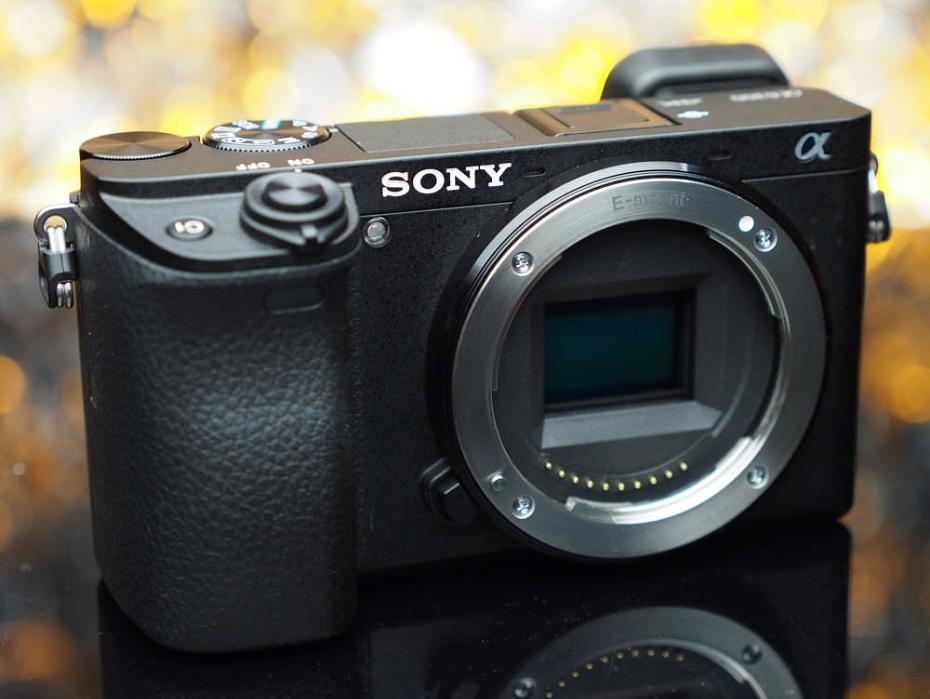
The Sony Alpha A6300 updates the A6000, which will remain on the market, and adds a number of improvements, including a new 24.2 megapixel sensor for improved low light performance, 4K video and faster readout speed to enable improved shooting performance. The camera body has been updated to be weather-sealed when used with weather-sealed lenses. The Sony Alpha A6300 is available now for around £989 body only.
Sony Alpha A6300 Features
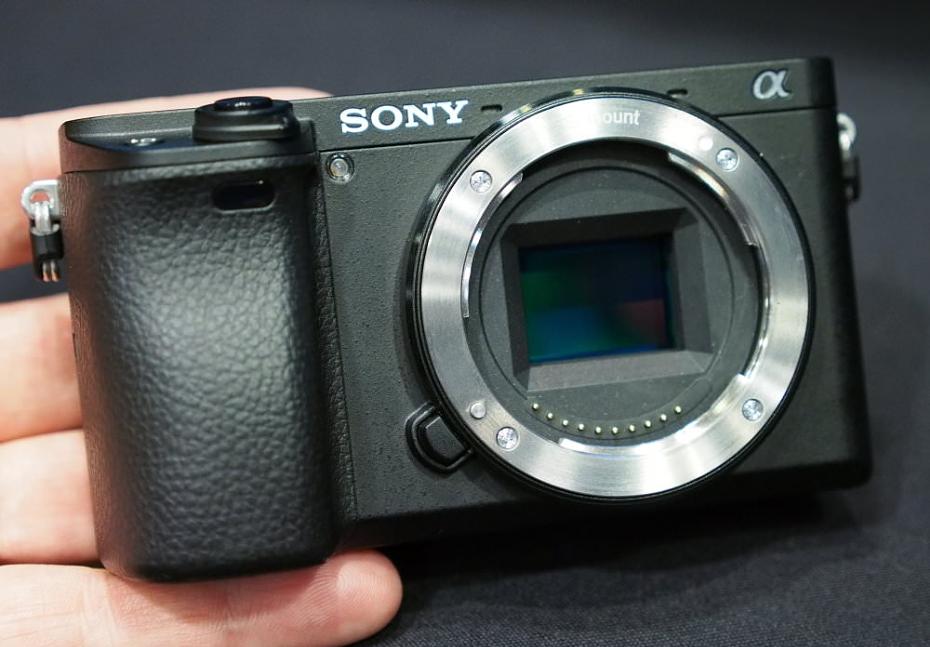
The Sony Alpha A6300 (ILCE-6300) has a new 24.2mp APS-C CMOS sensor with an ISO range of ISO100 to ISO51200. The sensor uses copper wiring which means it has larger photodiodes, and better sensitivity. There is a thinner wiring layer, and the copper wiring enables a faster readout - this enables 4K video readout, as well as a faster readout for a quicker viewfinder. The smaller wiring section means there is a larger photodiode dimension for enhanced light collection, and ISO12800 is improved with results visibly better than the A6000. This can be seen in the diagram shown below:
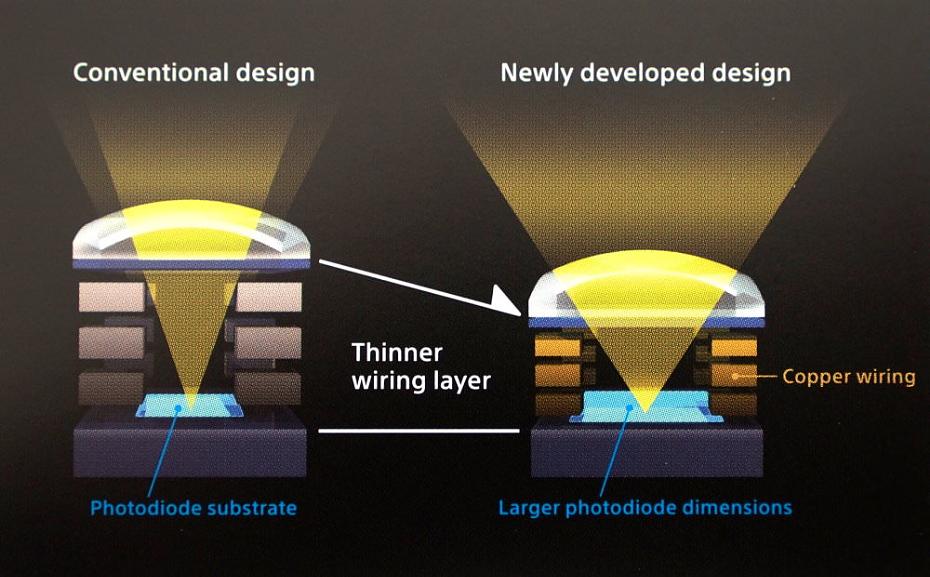 Sony APS-C Copper Wiring Sensor
Sony APS-C Copper Wiring Sensor
Sony claim the World's fastest AF speed with the A6300, (0.05s) have tested this with the Sony 16-50mm PZ kit lens. The A6300 has 425 AF points, with 425 phase-detection AF points, and 169 contrast-detection points. This works with all A-mount lenses when used with the Sony LA-EA3 mount adapter.
The camera offers 11fps continuous shooting (44-55 JPEG frames depending on compression, 21 raw frames), with continuous AF. Sony calls their AF tracking system "4D Focus", and with 425 focus points, this covers a wide area of the sensor, as well as offering "High-density tracking AF".
There are two high-speed continuous shooting drive modes selectable:
- Hi+ shoots at 11fps with continuous AF
- Hi shoots at 8fps, with minimal viewfinder lag, so that you can continue to keep your eye on the subject while shooting. (Live view continuous shooting)
Autofocus has been improved for video as well with 2x faster AF in movie mode compared to A6000 so that the camera can track fast-moving subjects, and an example shown was a flying bird.
The camera records 4K video at 3840x2160 pixels 30p, 25p, 24p, as well as high-speed FullHD video at up to 120/100fps, and we go into more detail on the video features of the A6300 later.
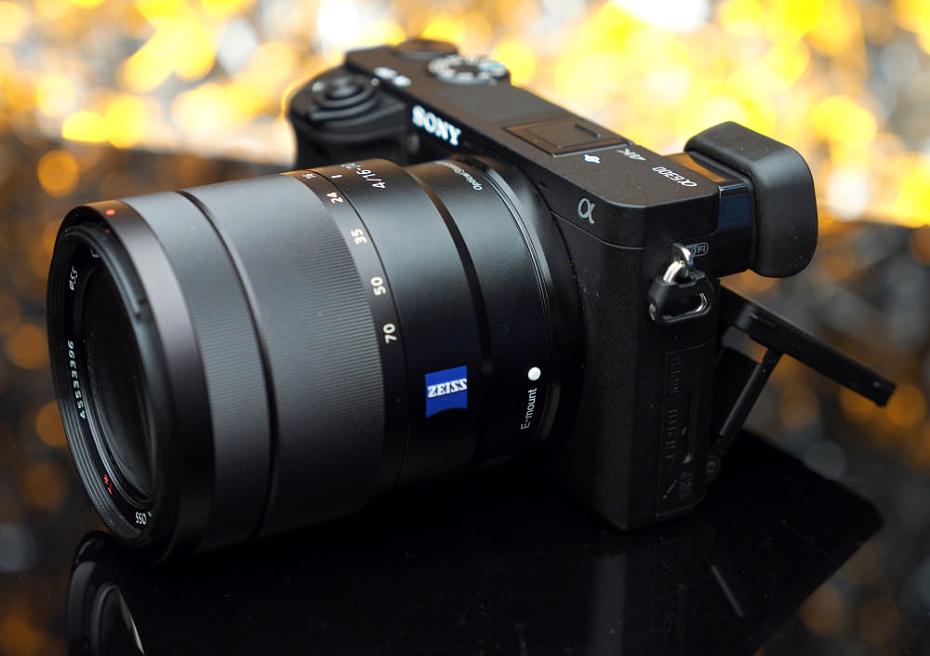
The A6300 features an XGA OLED viewfinder with 100fps refresh mode which has been developed in response to customer's common concerns regarding electronic viewfinders, which includes (poor) resolution, slow time lag, and blackout. Sony believes they have resolved these issues, with a 2.36m dot resolution viewfinder with a high refresh rate, and reduced time lag and blackout when using the 8fps continuous shooting mode.
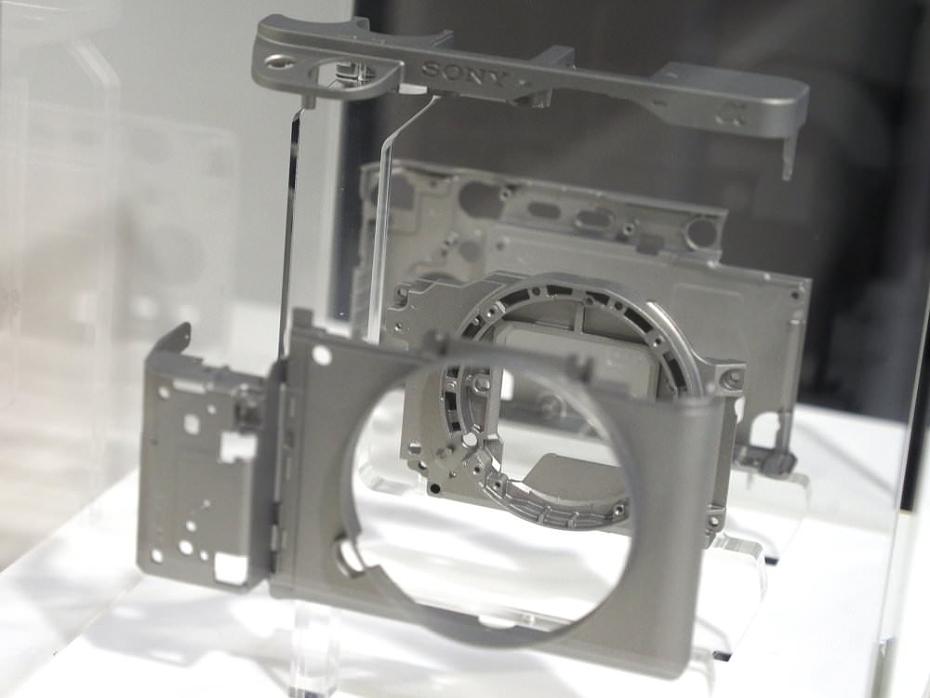 Sony Alpha A6300 Magnesium Alloy Construction
Sony Alpha A6300 Magnesium Alloy Construction
The A6300 has a magnesium alloy body, that is dust and moisture resistant (with FE lenses such as the FE 85mm f/1.4 GM and FE 24-70mm f/2.8 GM). The camera also offers button customisation, a tiltable 3inch LCD screen. An enhanced grip and shutter release button compared to the A6000. There's a robust lens mount, built to the same standard as the Sony Alpha A7 Mark II series. The A6300 can be powered via the MicroUSB socket, which is also used for charging, and another new addition is a microphone socket on the side of the camera. These developments have been made following feedback from customers and journalists.
Sony Alpha A6300 Key Features
- 24.2mp APS-C CMOS Sensor (Copper wiring)
- 425 phase-detection AF points
- 3inch tilting screen, 921k dots
- 2.4 million dot EVF with 120fps refresh rate
- 11fps continuous shooting with AF/AE
- 8fps continuous live-view mode
- 14-bit RAW output
- ISO100 to ISO51200
- Wi-Fi, NFC, QR Code connectivity
- Sony PlayMemories App
- Power supply via USB
- Weather sealed magnesium alloy body*
* Weather sealing is only applicable when using FE lenses.
Sony Alpha A6300 Video Features
Oversampling - The A6300 uses 20 megapixels for oversampling (without pixel binning) to make a 4K image giving high-resolution video output - and in comparison, this uses a higher resolution than the A7R II which uses 15 megapixels for oversampling. The camera uses a Super35 equivalent area of the sensor for 4K video, meaning there is very little cropped. The camera needs a UHS-I class 3 SD card for internal recording, and also supports clean HDMI to record to an external device.
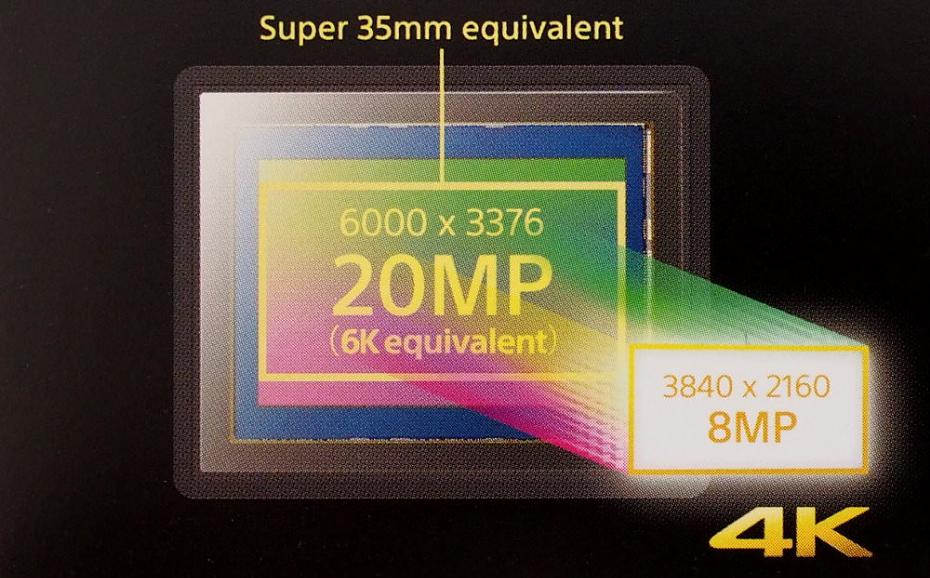 Super35 Equivalent 4K Video
Super35 Equivalent 4K Video
Sony Alpha A6300 Video Features
- 4K video recording, full pixel readout (3840x2160 pixels 30p, 25p, 24p)
- XAVC S, 100MBps (MP4 wrapper)
- FullHD video at 120/100fps
- S-log3 gamma, S-log2 gamma, S-gamut3
- Picture profile
- Timecode / User bit
- Gamma display assist
- Enhanced Zebra display
- Clean HDMI output (QFHD 3840x2160)
- ISO100-25600 available
- Microphone socket
Sony Alpha A6300 Handling
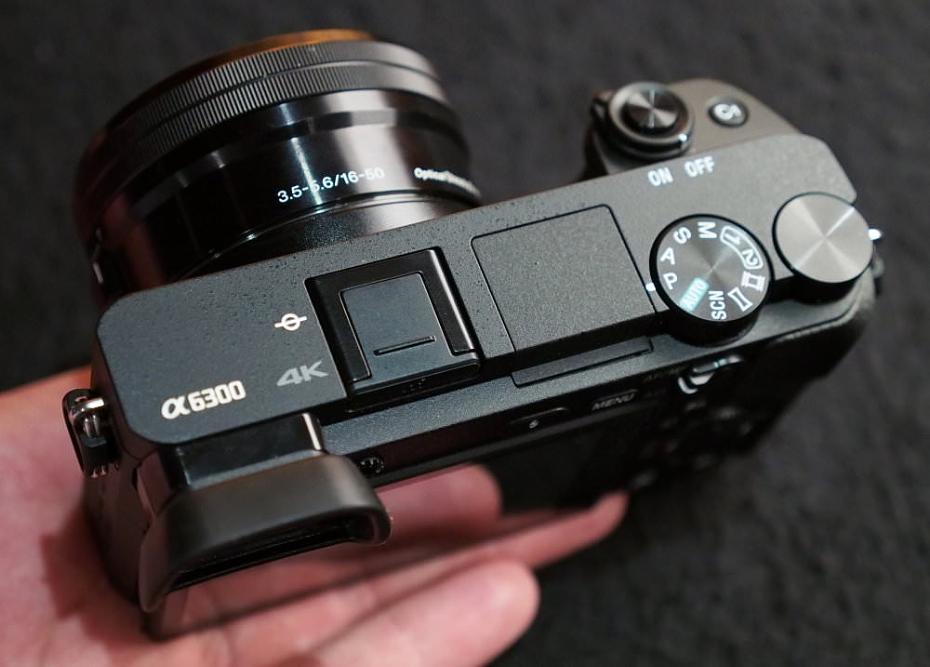
The Sony Alpha A6300 has a very similar button layout to the A6000, and a familiar set of controls and buttons, including the Fn button on the back which gives quick access to some of the most popular settings. The options that appear on the function screen can be customised, so that you can setup the camera to give you access to your favourite settings. This means you could set it to show the same options as another Sony camera you might have, which will make the camera easier and quicker in use.
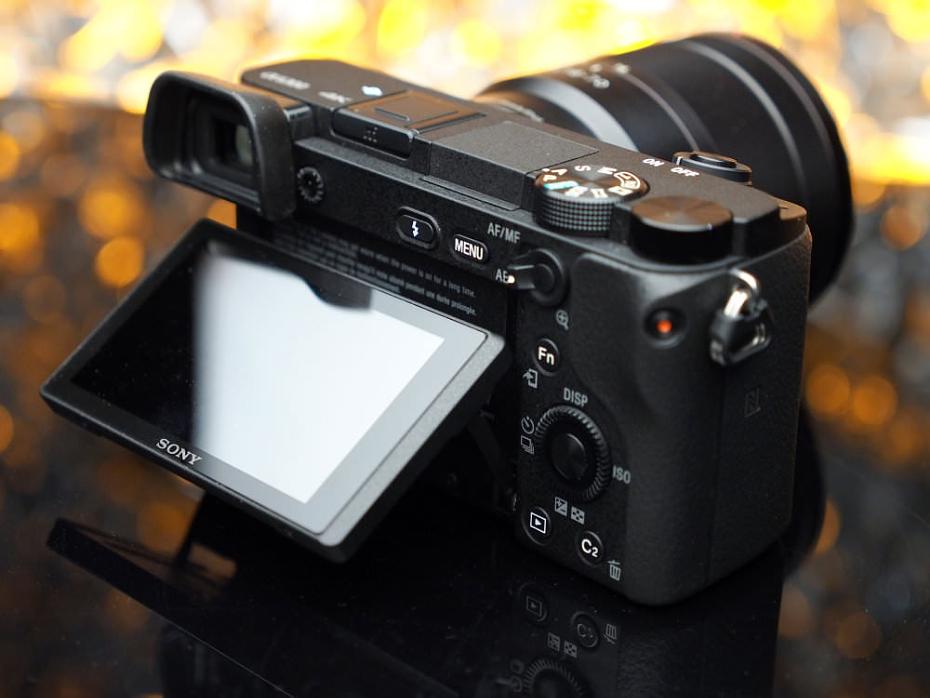
When using the high-speed continuous shooting mode at 11fps, you can shoot between 44 and 55 JPEG shots depending on the compression used, or 21 raw images. We've recorded a quick video showing the camera shooting at 11fps below:
The Sony Alpha A6300 menus will be familiar to anyone who has used a recent Sony camera, as the menu system has been standardised across all Sony cameras, whether you are using a Sony Alpha camera or a Sony Cyber-shot model. We've recorded a video showing the menu options below:
The camera has an improved battery life of 400 shots when using the LCD screen, or 350 shots using the EVF, which is an improvement over the A6000. Focus works down to -1EV and up to 20EV, with exposure metering working down to -2EV and up to 20EV.
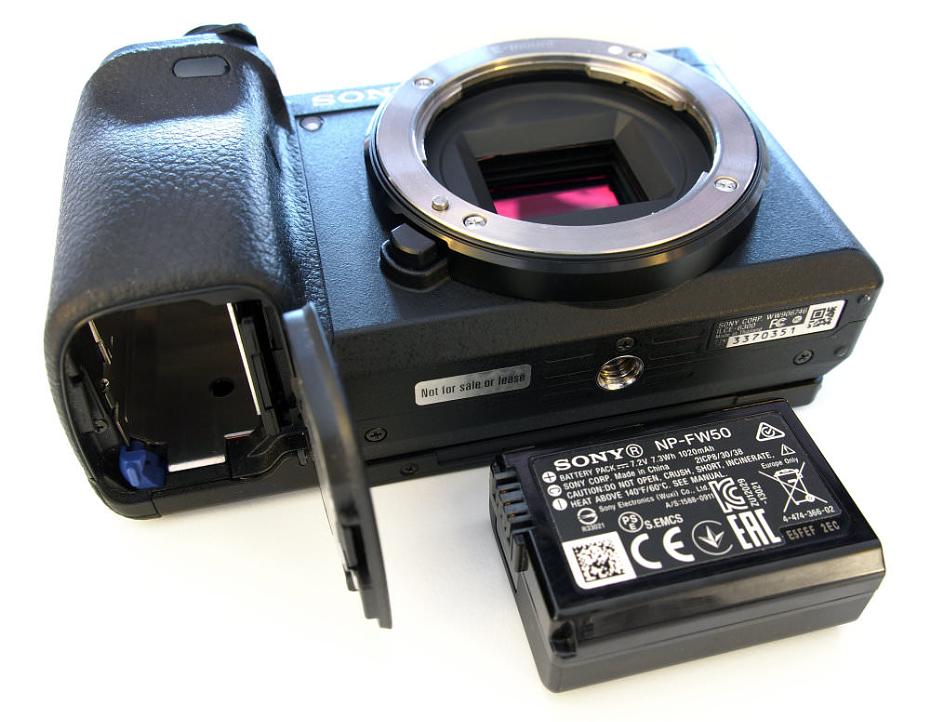
Sony Alpha A6300 Performance
The performance section is where we look at the image quality performance of the camera. Additional sample photos and product shots are available in the Equipment Database, where you can add your own review, photos and product ratings.
Speed - We took a number of shots to test the camera's responsiveness, from switch on to first photo, shot to shot, focusing speed etc. We take a number of shots and then use the average to ensure accurate and consistent tests, making it easy to compare with other cameras.
| Shutter Response | <0.05secs |
| Wide - Focus / Shutter Response | 0.125secs |
| Full zoom - Focus / Shutter Response | 0.1secs |
| Switch on Time to Taking a Photo | 1.9secs |
| Shot to Shot without Flash | 0.4secs |
| Shot to Shot with Flash | 0.8secs |
| Continuous Shooting - JPEG (shots before slow down) |
10.7fps (57 shots) |
| Continuous Shooting - Flash | 0.8fps |
| Continuous Shooting - RAW | 11fps (22 shots) |
With continuous AF active, the camera gives an impressively quick 10-11fps and you can see the focus points while shooting, letting you know the subject is being correctly tracked.
Sony Alpha a6300 Sample Photos
Sample Photos - Photos from the camera show good levels of saturation, with bright colours, and images "pop" straight from the camera. You can customise the colour settings to your own preferences, with options for contrast, saturation and sharpness. Focus is also very rapid, and the camera will quickly lock onto a subject's face. The camera has good dynamic range on default settings (Auto DRO - Dynamic Range Optimisation), and you can also adjust these settings, or shoot using the HDR mode, which combines a number of shots taken at different exposures.
Sony Alpha a6300 Lens test images
Lens Performance - The Zeiss 16-70mm f/4 lens performs well and gives a good zoom range. The lens-based optical image stabilisation is also of particular benefit as the camera does not feature a built-in image stabilisation system, such as the anti-shake sensor in the Sony Alpha A7 Mark II range. Distortion is well controlled, with the camera automatically correcting for this in-camera, and there are a number of options including shading compensation, chromatic aberration compensation and distortion compensation. The lens gives sharp, detailed images, although images were occasionally softer towards the edges of the frame. Better macro performance can be achieved by using a dedicated macro lens, and for ultimate image quality, a prime lens is recommended.
Sony Alpha a6300 ISO test images
ISO Noise Performance - Noise performance is very good, right up to ISO3200, although there is a slight drop in detail at ISO1600, and again at ISO3200. At ISO6400 noise starts to become more noticeable with a further drop in detail, and a slight drop in colour saturation. Results should still be usable, and it's not until ISO12800 where noise becomes less pleasant, and at this setting there's a more noticeable drop in colour saturation - you may prefer to process the raw files yourself at this setting to get better images. At ISO25600 and ISO51200 the camera struggles a little to control the noise, and again, you may prefer to process your own raw files to get usable images. High ISO NR options include Normal, Low, and Off. We left the camera on Normal, which is the default setting.
Sony Alpha a6300 White-balance test images
White Balance Performance - The camera gives slightly warm results when using auto white balance (AWB) setting under tungsten lighting, but this will be pleasing to most people, and for more accurate results the preset does an excellent job. AWB performs brilliantly under fluorescent lighting, with the fluorescent presets giving a slight colour cast.
Sony Alpha a6300 Digital filters
Digital Filters - There are a number of customisable creative styles where you can alter contrast, saturation and sharpness. There are also a large number of picture effects, that let you apply digital filters to images including Toy camera, Posterisation, Miniature and selective colour to name a few, although when shooting using the creative effects, the camera will record JPEG images only.
 Sunset Panoramic | 1/125 sec | f/4.0 | 70.0 mm | ISO 640
Sunset Panoramic | 1/125 sec | f/4.0 | 70.0 mm | ISO 640
The camera has a built-in automatic panoramic shooting mode, where you press the shutter release button and pan / turn the camera from one side to the other. The results are good, and the camera does a good job of stitching the images together with a decent resolution image produced. If you don't get the speed right then you can end up with the camera leaving a grey area at the end of your panoramic image, although this can easily be corrected later on your computer.
Video - As with other Sony Alpha cameras that feature 4K video recording, such as the A7S II, and A7R II, the Sony Alpha A6300 is jam-packed full of options and settings to give you an extremely capable video device.
The 4K (UHD) video mode records video at a resolution of 3840x2160 pixels with frame rate options of 30p, 25p, and 24p. When using 25 or 24p, the camera will use the full sensor width which is a Super35 equivalent, and compress the 20 megapixels down into a 4K / 8mp resolution, giving extremely sharp and detailed 4K videos. There are a number of compression options including XAVC S, 100MBps (MP4 wrapper). You can also record high-speed FullHD video at 120fps (NTSC) /100fps (PAL). The focus performance of video is also very good, with 425 phase-detection AF points on the sensor.
The camera has a microphone socket, so that you can upgrade the sound quality compared to the stereo internal microphones. If you are recording video hand-held, then you'll benefit from the use of a lens with optical image stabilisation.
More advanced options include S-log3 gamma, S-log2 gamma, S-gamut3, Picture profiles, Timecode / User bit, Gamma display assist, Focus peaking, an enhanced Zebra display, Clean HDMI output (QFHD 3840x2160), and the camera gives you an ISO range of ISO100-25600. Some of these features aren't even found on 4K cameras such as the £5000 Canon EOS-1D X Mark II. Additional Sony Alpha A6300 videos can be found on the ePHOTOzine YouTube channel.
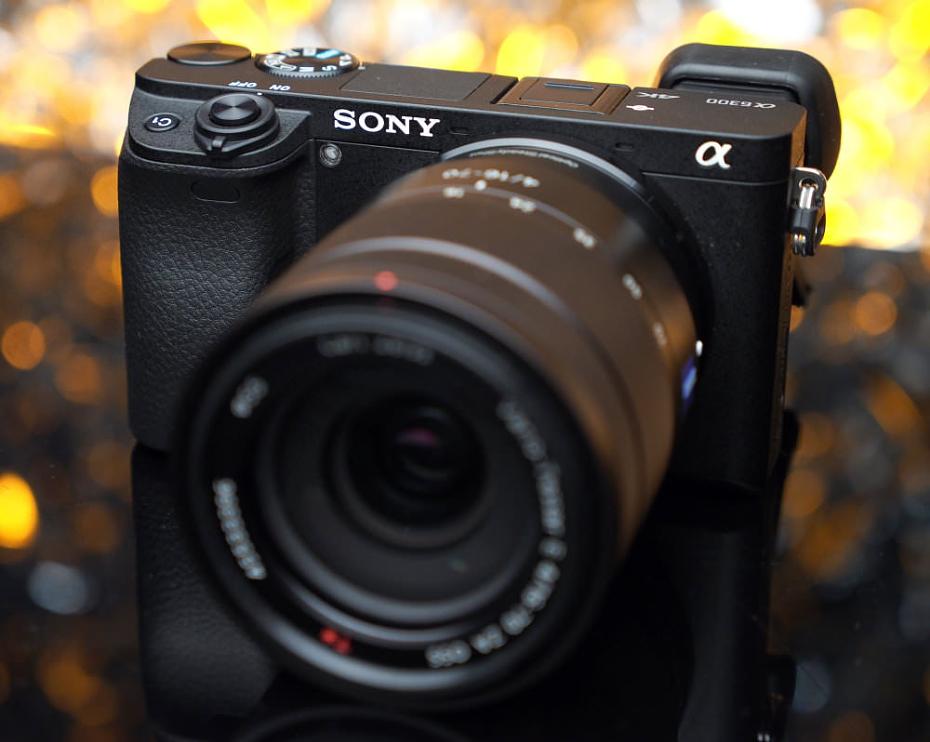
Value For Money
The Sony Alpha A6300 is available for £989 body only which makes it very good value for money, particularly up against the following cameras capable of shooting at high speeds:
Olympus OM-D E-M1, 10fps, 9fps with C-AF (with firmware update), £849 body only
Fujifilm X-T1, 8fps with C-AF, £805 body only
Canon EOS 7D Mark II, 10fps, 9fps with C-AF, £1179 body only
Sony Alpha A77-II, 12fps, 9-10fps with C-AF, £764 body only
Alternative cameras capable of recording 4K video:
Nikon D500, 10fps, 4K (UHD) video, £1729 body only
Panasonic Lumix GH4R, 12fps, 7.5fps with C-AF, 4K (Cine-4K / UHD) video, £999 body only
Have a look at more premium mirrorless cameras with built-in EVF in our Top 12 Best Premium Mirrorless Cameras. You'll also need to buy a memory card and a case or bag to keep your camera safe and protected - have a look at our complete guide to camera bags.
Sony Alpha A6300 Verdict
The Sony Alpha A6300 gives other mirrorless and digital SLR cameras a run for their money, with a high-resolution 24-megapixel sensor, high-speed continuous shooting with continuous AF at 11fps, and a whopping 425 phase-detection AF points, with an impressively wide coverage area. The camera delivers excellent images, with very good noise performance, and also offers some of the most advanced video options available at this price point.
The improved battery life and USB charging will be a welcome feature, along with the weather-sealed body. However, to get a fully weather-sealed system, you have to use full-frame FE lenses, which is going to noticeably increase the size of the camera system, as well as the price. Whether you need the additional weather-sealing, or not, will be up to you and your budget, but as the Sony E-mount lens range has been growing, so too has the versatility of the system, and the range of lenses available is beginning to look like a much more mature option compared to just a few years ago.
If you are a stills photographer, then you may find yourself happy with the previous model, particularly if you are on a budget, but if you are interested in high speeds sports photography, or want to take high-quality 4K (UHD) video, then the Sony Alpha A6300 is an excellent choice. One that will go beyond the needs of most casual photographers and videographers. For those that know what they are doing, this will seem like the bargain of the year, offering features found on much more expensive cameras (like the A7S Mark II and A7R Mark II), yet in a more compact camera system.
Sony Alpha A6300 Review - Verdict: The Sony Alpha A6300 offers a compelling range of features including extremely fast performance and excellent video quality.

